Drum brakes are not completely outdated. Most modern bikes have disc brakes, but drum brakes can still be found on some cruiser bikes, tricycles, and older bicycles. They are more suitable for specific classes of bikes, and some riders actually still prefer them.
So, is a drum brake for you? Or should you go for electric bikes and modern tricycles with more advanced disc brakes?
Let's tackle drum brakes vs disc brakes, the major differences, explain how each works, and answer common questions like how to change drum brakes, how to bleed them, and how to adjust disc brakes.

Drum Brakes vs Disc Brakes: Key Differences
The key difference between drum brakes and disc brakes is that drum brakes are ideal for low-intensive uses like commuter and utility bikes.
In contrast, disc brakes are ideal for more intense uses on mountain bikes, electric bikes, and other kinds of performance bikes.Here are some other differences between drum brakes and disc brakes
|
Feature |
Drum Brakes |
Disc Brakes |
|
Stopping Power |
Moderate |
Excellent |
|
Performance in Rain & Mud |
Good |
Outstanding |
|
Heat Dissipation |
Poorer |
Excellent |
|
Weight |
Heavier |
Lighter |
|
Maintenance |
Low-maintenance |
Moderate to High maintenance |
|
Cost |
Affordable |
More Expensive |

Drum Brakes vs. Disc Brakes: Changing, lifespan, bleeding, replacing, performance and Cost
Which is Easier to Change?
Compared to disc brakes, drum brakes are more complicated to change on a bike. This is mainly because they have enclosed components: to access the brake shoes, you must first remove the drum entirely, which takes more time.
- Disc brakes are externally mounted, so it is easier to swap out brake pads or rotors.
i. Lifespan: Which Last Longer?
Drum brakes last longer than drum brakes: their enclosed design protects them from dirt and moisture. Disc brakes tend to wear out faster, especially in especially in extreme riding conditions.
ii. Bleeding Process: Which is Easier to Bleed?
Hydraulic drum brakes require less frequent bleeding, but hydraulic disc brakes need frequent bleeding to preserve superior responsiveness.
iii. Replacing Components
Replacing drum brakes is more complicated than replacing disc brakes: the brake shoes, springs, and adjusters must be replaced.
Replacing disc brakes usually involves swapping the brake pads, rotors, or calipers, and you are done.
iv. Performance in Wet Conditions
Compared to disc brakes, drum brakes are less efficient in wet conditions. The brakes are enclosed within the drum structure, which makes it easier for heat to build up, especially if you apply the brakes for too long or too often.
Disc brakes, however, provide consistent stopping power even in rain and mud.
v. Cost: Which is More Affordable?
Drum brakes are more affordable to buy and replace than disc brakes. Drum brakes for a bike cost $20-$100, while brand-new Shimano hydraulic disc brakes cost about $320 or more.
- Drum brakes may be less costly but might require more frequent maintenance
- Disc bikes are more expensive upfront but require less maintenance in the long run

How Drum Brakes Work
Drum brakes mainly consist of two components that work together to slow the bike: a drum and brake shoes. The drum is attached to the wheel, and brake shoes are housed inside it.
When you press the brake lever, the brake shoes push outward against the inner surface of the drum surface, creating friction and slowing the bike down.
- The drum also keeps the brakes enclosed, making them resistant to dirt and water.
How to Change Drum Brakes
Changing drum brakes takes more time than disc brakes, but the process is still quite easy. Follow these six steps:
- Gather your tools: you’ll need a wrench, pliers, and new brake shoes.
- Remove the wheel: loosen the axle nuts and slide off the wheel.
- Open the drum assembly: Remove the drum cover to access the brake shoes.
- Replace the brake shoes: carefully detach the worn-out shoes and install new ones.
- Reassemble the drum: secure the drum cover and reinstall the wheel.
- Test the brakes : spin the wheel and engage the brake to ensure proper function.

How to Bleed Drum Brakes
Bleeding drum brakes on your bike occasionally help remove air bubbles and maintain a consistent performance. Though less common on bicycles, hydraulic drum brakes sometimes need bleeding.
Here are some guidelines on how to bleed drum brakes:
- Locate the leed Valve: it is found found near the brake cylinder.
- Attach a bleed kit: connect a hose to the valve and place the other end in a brake fluid container.
- Pump the brake lever: this forces air bubbles out through the hose.
- Close the valve: once no air is visible, tighten the bleed valve.
- Refill Brake Fluid: ensure the reservoir is full and test the brake.
How Long Do Drum Brakes Last?
Drum brakes tend to wear slower than disc brakes because they are enclosed. However, how long your drum brakes last depends on several factors like:
- frequency of usage
- The kind of terrain you ride on
- How frequently and properly you maintain the brakes.
Since they are enclosed, they tend to wear slower than disc brakes in urban settings. However, frequent downhill riding can accelerate wear.
How to Replace Drum Brakes
Replacing drum brakes on your bike is much similar to changing them, except you have to replace additional components like springs and adjusters if they are worn. Here’s what to do:
- Remove the old brake assembly: take off the drum and remove old brake shoes.
- Install the New Components: replace brake shoes, springs, and adjusters.
- Reassemble and test: put the drum back on, tighten everything, and test.

Disc Brakes
Compared to drum brakes, disc brakes are more effective. They work by squeezing brake pads against a metal rotor attached to the wheel hub, a system that offers better stopping power, particularly in wet conditions.
Types of Disc Brakes
There are two main types of disc brakes: mechanical disc brakes and hydraulic disc brakes.
- Mechanical disc brakes are more common, and they work via a cable, like traditional rim brakes. They are easier to maintain but often require frequent adjustments.
- Hydraulic disc brakes use a fluid for smooth and powerful braking. They require occasional bleeding to remove air bubbles.
Mechanical vs Hydraulic Disc Brakes
Overall, hydraulic disc brakes are best for high performance and precision, while mechanical disc brakes are more budget-friendly and easier to maintain.
|
Feature |
Mechanical Disc Brakes |
Hydraulic Disc Brakes |
|
Brake actuation |
Use a cable to apply braking force |
Use hydraulic fluid for braking force |
|
Stopping Power |
Less stopping power and modulation, especially in extreme conditions |
More stopping power and smoother modulation |
|
Maintenance |
Easier to repair, maintain and adjust, with no need for hydraulic fluid |
Require slightly more maintenance and may need occasional bleeding |
|
Weight |
Lighter |
Heavier |
|
Cost |
More affordable |
More expensive |
How to Adjust Disc Brakes
Adjusting disc brakes on a bike involves loosening the caliper bolts and realigning the caliper. Follow these steps:
- Check brake pad alignment: ensure the pads are evenly spaced around the rotor.
- Loosen the caliper bolts: slightly loosen the mounting bolts.
- Realign the caliper: squeeze the brake lever and retighten the bolts to center the pads.
- Test the brake: spin the wheel and ensure smooth operation without rubbing.
Which Brakes Should You Choose?
- Choose drum brakes if you want a low-maintenance braking system for everyday commuting.
- Choose disc brakes if you need superior stopping power, ride in varying conditions, or own an e-bike.
Ebikes With Disc Brakes
When it comes to steady, reliable, and responsive brakes, Viribus bikes are unrivaled. Viribus electric bike come with mechanical disc bikes, which, in addition to being superior to drum bikes, provide an impressive balance of braking power and excellent modulation.
Check out these bikes from Viribus.
Viribus Panther Electric Mountain Bike
This mountain bike comes in beautiful and sleek black, light blue, and green colors. Its carbon steel frame is solid and firm, with a braking system supported by 160 MM mechanical disc brakes.
Here are some main features:
- A 350-gear motor
- Powered by a 48V 10.4Ah high-tech lithium battery.
- Top speeds of 20 Mph with throttle, 24 Mph with pedal
- PAS range estimate of 20 - 40 Miles
- Shimano 7 x 3-speed gear shift system
- Frame made of 6061 Aluminum
Viribus BZ1 Step-Thru Electric Bicycle
This bike gives you a bit of everything and is exactly the bike you need for your daily commute, a little bit of fun, and also for practical uses like grocery shopping or running errands.
Check out some main features.
- A 48V, 500W (peak 1000W) motor
- Low step-through frame for easy mounting.
- Pedal Assist Intelligent with 0 ~ 5 level pedal assist
- Powered by a 48V 13A, 624 WH high-tech lithium battery
- Reaches a top speed of 20 Mph with throttle, 24 Mph with pedal assist
Whether it’s leisurely rides around the neighborhood, running errands, or exploring new trails, the right bike from Viribus can make cycling a pleasurable and sustainable activity for years to come.
Check out Viribus for more exciting and informative blogs on bicycles, ebike laws in California, New York and all over the U.S. Also discover 6 reasons you shoud go cycling with your partner.




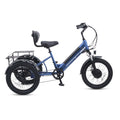
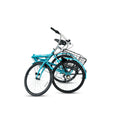
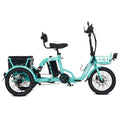

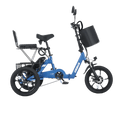







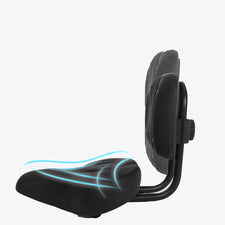





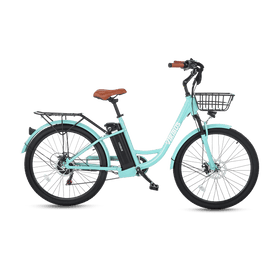
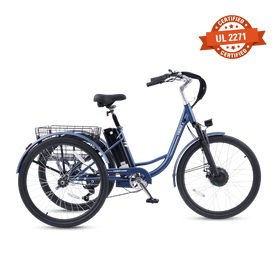
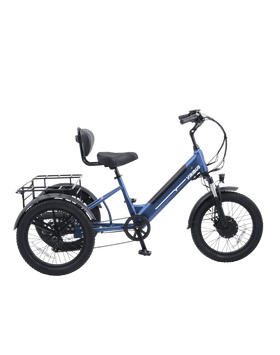




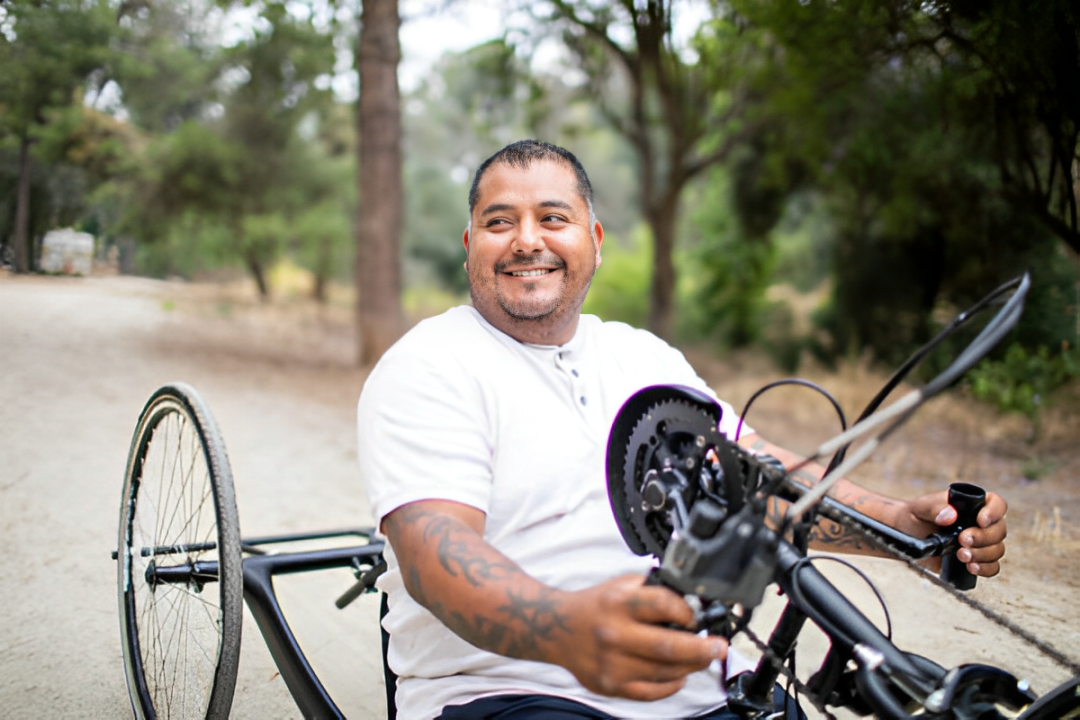
Leave a comment
All comments are moderated before being published.
This site is protected by hCaptcha and the hCaptcha Privacy Policy and Terms of Service apply.